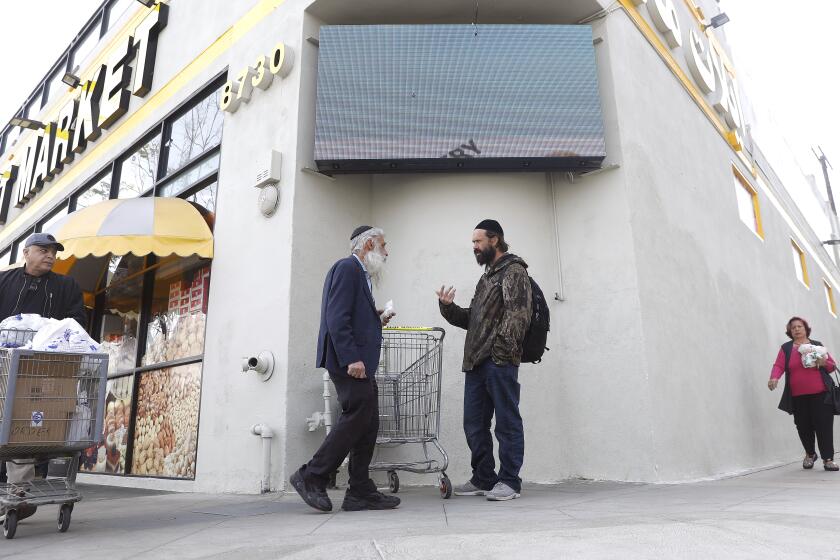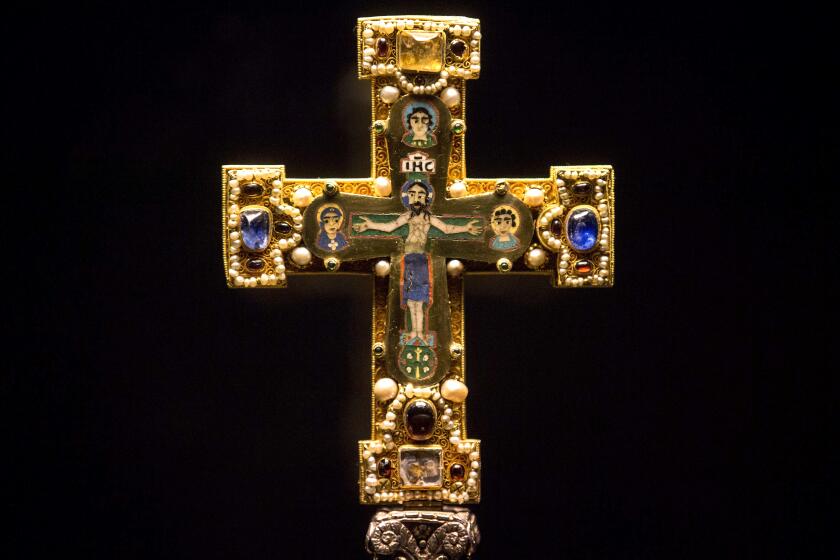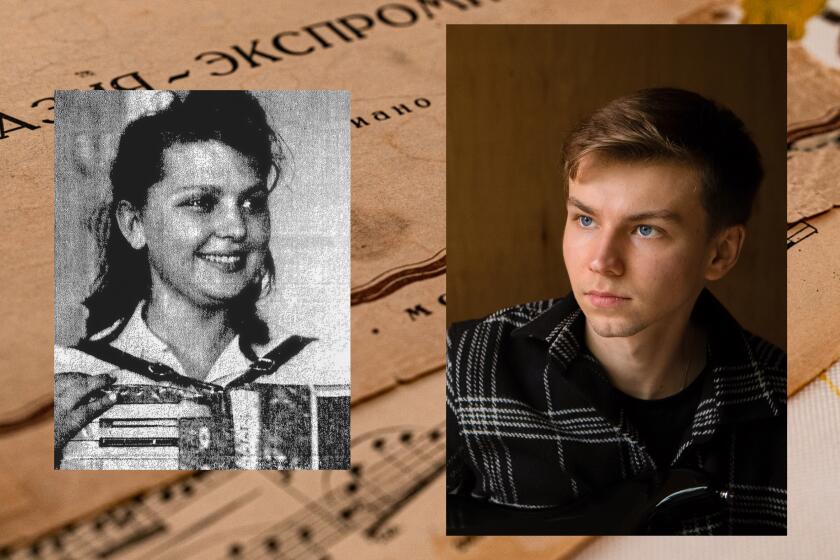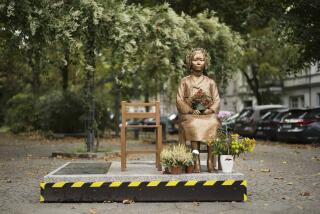German curator on a mission to return silver heirlooms stolen from Jewish families by the Nazis
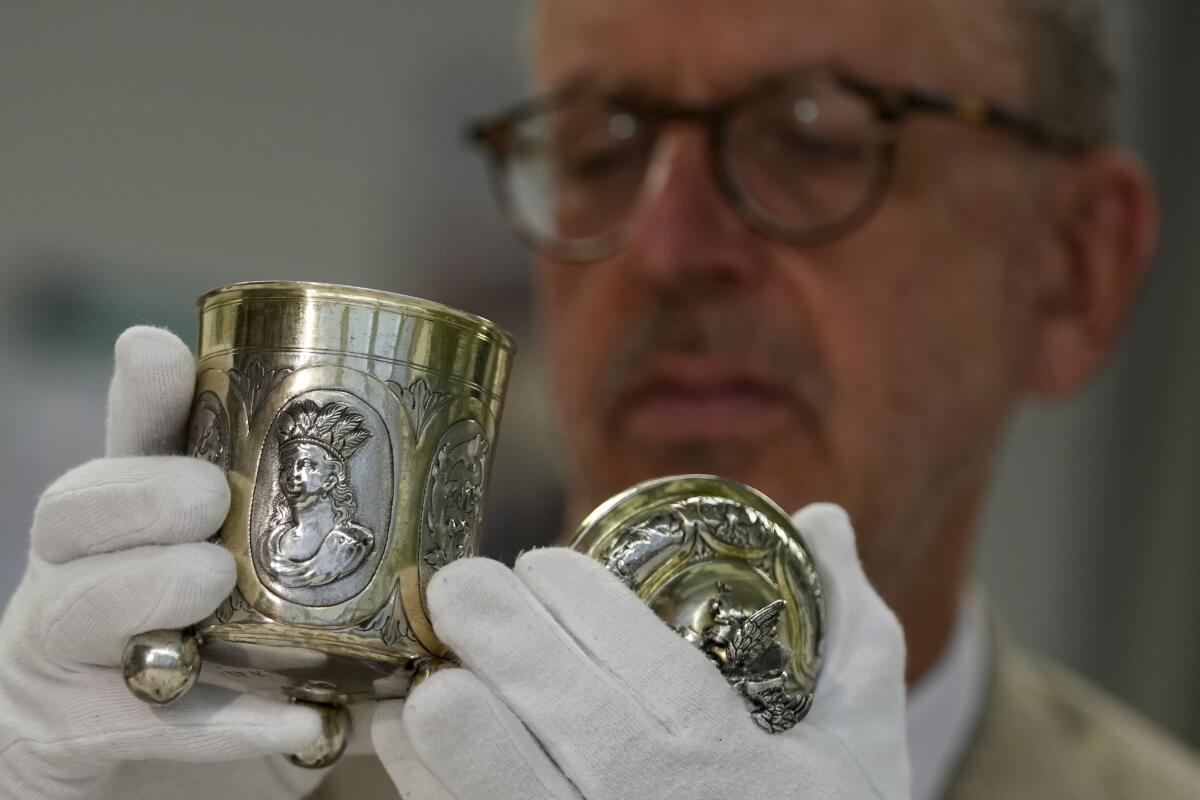
- Share via
MUNICH, Germany — Matthias Weniger put on a pair of white cloth gloves and carefully lifted a tarnished silver candleholder, looking for a yellowed sticker on the bottom of it.
The candlestick is one of 111 silver objects at the Bavarian National Museum that the Nazis stole from Jews during the Third Reich in 1939. That’s when they ordered all German Jews to bring their personal silver objects to pawn shops across the Reich — one of many laws created to humiliate, punish and exclude Jews.
What started with anti-Jewish discrimination and persecution in 1933, after the Nazis were voted to power in Germany, led to the murder of 6 million European Jews and others in the Holocaust before World War II ended with Germany’s surrender in 1945.
Weniger, who is a curator at the Munich museum and oversees its restitution efforts, has made it his mission to return as many of the silver objects as possible to the descendants of the original owners.
“These silver objects handed in at the pawn shops are often the only material things that remain from an existence wiped out in the Holocaust,” Weniger said in an interview last week at the museum’s workshop, where he displayed some silver items that have yet to be returned.
“Therefore it’s really important to try to find the families and give back the objects to them,” he added.
Thousands of the pieces taken from the Jews were melted into about 135 tons of silver, and used to help Germany’s war efforts. But several museums ended up with hundreds of silver pieces such as candlesticks used to light candles on the eve of Shabbat, kiddush cups to bless the wine, silver spoons and cake servers.
Anti-Jewish incidents hit a record high in U.S. and California in 2022, the Anti-Defamation League says. Some harassers referenced Ye’s antisemitic remarks.
Some items were returned to Holocaust survivors in the 1950s and ’60s, if they came forward and actively tried to retrieve their stolen possessions. But many former owners were murdered in the Holocaust or, if they managed to flee from the Nazis, had ended up in far-flung corners of the globe.
“Two-thirds of the last owners did not survive the Shoah,” Weniger said, using the Hebrew term for the Holocaust.
Despite these odds, and with a combination of thorough detective work, dedication and deep knowledge of history, Weniger has so far managed to return about 50 objects to the family members and relatives of the original owners.
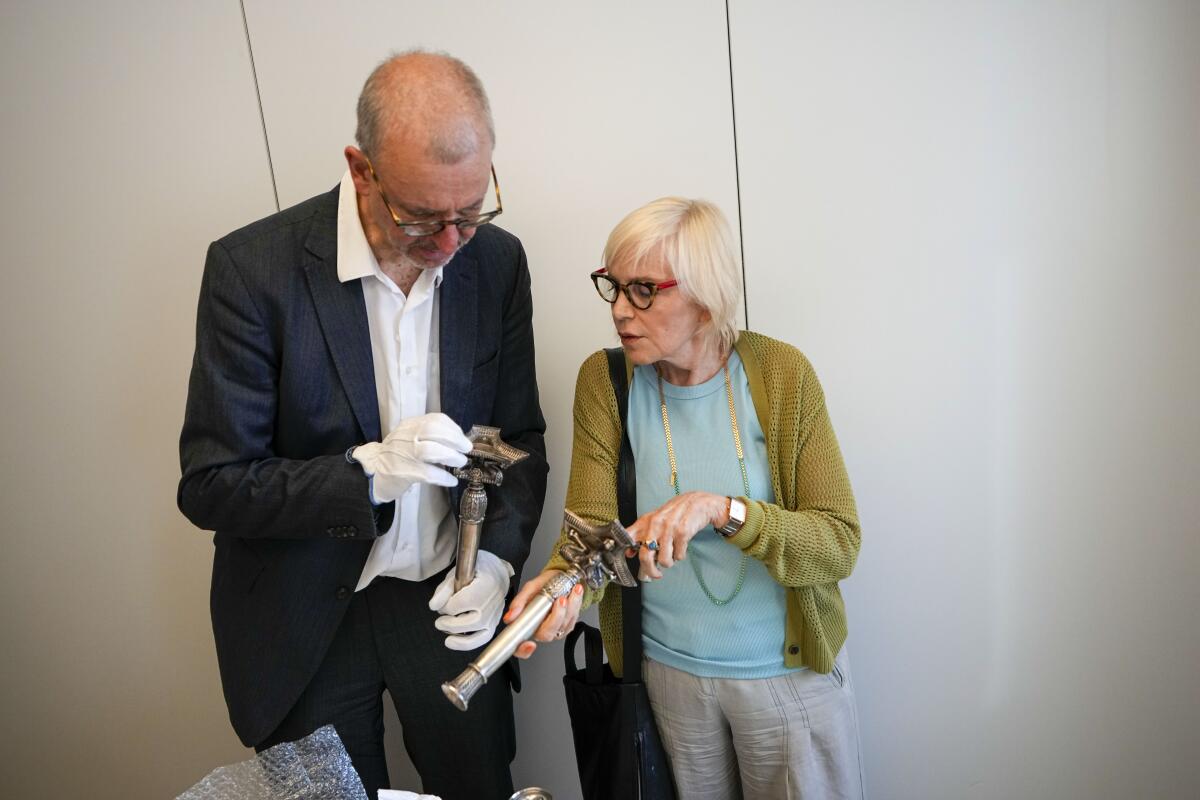
He’s convinced that he may be able to return almost all remaining objects by the end of this year.
First, he searches for the identity of the original owners. The little yellowed paper stickers on some of the pieces often help his efforts. They were put on the objects by the pawn shops — a testament to Germans’ obsessive bureaucracy. The numbers on the stickers are also listed on more than 80-year-old documents naming the Jews who had to give away their silver — sometimes beloved heirlooms that had been passed down in families for many generations.
Once Weniger discovers the names of the original owners, he starts looking up Jewish obituary and genealogy databases, in hopes that direct descendants or more distant relatives may have posted their names online.
“And so you get from one generation to the next generation and you end up with telephone books … with LinkedIn, with Facebook, with Instagram or email addresses that correspond to a member of the younger generation of that family,” the researcher explained.
The U.S. Supreme Court shields Germany from being sued by the heirs of Jewish art dealers, including Los Angeles music producer Jed Leiber.
In most of the cases, Weniger says he gets lucky and is able to track down the right relatives.
The majority of descendants live in the United States and Israel, but the museum has already or is in the process of also returning silver pieces to their original owners’ relatives in France, the United Kingdom, Australia and Mexico.
Weniger makes a point of personally delivering the pieces to the families. He traveled to the U.S. earlier this year, and last week, he returned 19 pieces to families in Israel.
There, Weniger met up with Hila Gutmann, 53, and her father Benjamin Gutmann, 86, at his home in Kfar Shmaryahu north of Tel Aviv, and gave them a small silver cup.
Weniger had managed to track down the family with the help of the tracing service of Magen David Adom — Israel’s version of the International Committee of the Red Cross.
The cup was likely used for kiddush to bless the wine on the eve of Shabbat — but nobody knows for sure because the original owners, Bavarian cattle dealer Salomon Gutmann and his wife, Karolina, who were the grandparents of Benjamin, were murdered by the Nazis in the Treblinka extermination camp.
“It was a mixed feeling for us to get back the cup,” Hila Gutmann said. “Because you understand it’s the only thing that’s left of them.”
The Norton Simon Museum will keep two Renaissance masterpieces looted by the Nazis during World War II under a unanimous decision Monday by a federal appeals court.
While the grandparents of Benjamin Gutmann were murdered in the Holocaust, their son Max — Benjamin’s father — survived because he fled to the British-mandated territory of Palestine, in what is now Israel.
Despite the pain triggered by the loss and return of the silver cup, the Gutmanns say they’re happy to have it back and plan to use it in a ceremony with all their other relatives on Rosh Hashanah, the Jewish New Year, in September.
As for Weniger, the bearer of the cup, the Gutmanns have nothing but praise for him and his work.
“He’s really dedicated to it,” Hila Gutmann said. “He treats these little objects with so much care — like they are holy.”
During the Holocaust, a Ukrainian family hid a girl from the Nazis. Decades later, with Ukraine at war, her son and a community of strangers repay the kindness.
More to Read
Sign up for Essential California
The most important California stories and recommendations in your inbox every morning.
You may occasionally receive promotional content from the Los Angeles Times.
